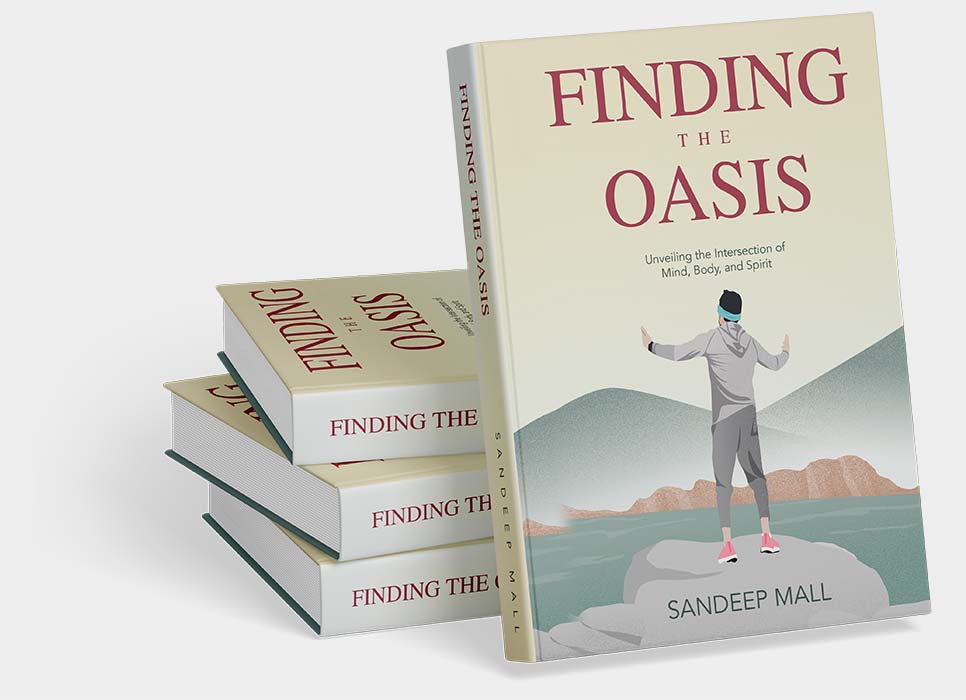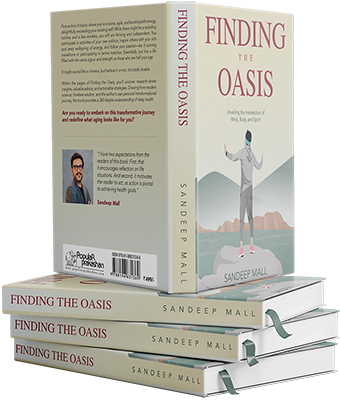Inspiration For Joyful Living.
I’m Sandeep Mall, a first-gen entrepreneur running a Delhi NCR-based export-oriented engineering company.

Finding The Oasis
I’ve crafted a comprehensive workbook addressing diverse factors behind metabolic diseases, including midlife crisis, loneliness, environmental influences, and more.

Deep Health Workshops
Deep Health us about thriving in all the dimensions of your life, not just physical well-being.
A three-day workshop on “Deep Health,” which focuses on thriving in all dimensions of life, not just physical well-being. It emphasizes setting clear goals, breaking them down into specific skills, and practicing daily actions consistently. The workshop follows the “5 S” approach: Strategic, Segmental, Sequential, Simple, and Supported.

My Journey
Imagine a day where you wake up naturally, without an alarm clock’s irritating buzz, decide to take a walk along the beach or a nearby park, read a book, or simply enjoy a leisurely breakfast with loved ones.

As a life coach
The financial worldview of Sandeep Mall, who derives his financial acumen from his life experiences…

As an Entrepreneur
You wish more and more people experience the power of being fit…

As a Wildlife Photographer
An immersive experience within nature-that’s what we city folks always long for…
Good Vibes
Weekly Newsletters

COMMUNION was founded as a platform for like-minded individuals to connect, exchange ideas, and inspire personal growth.
Neuroscience research has uncovered specific ways that you can fine-tune your message to make sure others listen, attend to the message and act on it. Telling a story, your story, is one of them. Engaging in these self-transcendent practices like sharing minds or engaging into interactive sessions can open minds to information we didn’t want to hear and motivate us to greater activity. The insight is as important for business leaders as it is for sports managers and even politicians.
This is the idea behind the inception of COMMUNION, where we intend to share and exchange thoughts, experiences, ideas and lessons, and help each other grow.






